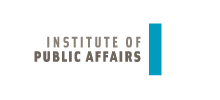Scenario #7
Arbitrary vote

Aims / objectives
The aim is to strengthen the participants’ competences for discussion of the pros and cons of different decision-making processes, to help them in understanding political decisions and to strengthen their critical thinking skills. It also aims to raise awareness of exclusion and democratic participation. The method is suitable for all target groups. In the context of youth work, the examples might need some more concrete relation to their daily life.
Description of the method
Explain to the participants that they may now play the parts of politicians in a little game. Two participants each get a printed sheet (Arbitrary Choice master copy); ask them to read the proposed solutions. Then the plenum will discuss the pros and cons of each decision given in the master copy (duration: 5 minutes). Afterwards, the class chooses a solution using the two following methods:
Simple majority: The participants decide by a show of hands which of the four is their favourite alternative. Write 1, 2, 3, and 4 on the blackboard and record how many people have voted for which.
Right to vote based on personal characteristics: You now tell the participants that the decision will be taken in a different way: Now, it is only those who wear glasses, or only women, who are allowed to vote (decide on one of the two characteristics). Now ask for the votes of the franchised wearers of glasses or women, and record the result on the blackboard.
Reflection and questions:
- Were the decision-taking methods used democratic/undemocratic, and why?
- Do you know other options for taking decisions in a group?
- Which are the circumstances that may facilitate decision taking in a group of people?
- What characterises a good (political) decision?
- What is the most (un)fair method of decision taking of all?
- Does the method of decision taking matter for the result, and why?
You can also try a number of other methods of decision taking (e.g. unanimity, one person decides, least resistance or chance) with the group. Another version, instead of the methods given above, is for educators, facilitators, teachers to simply leave the room and give the group five or more minutes to decide. Afterwards, you can reconstruct how the class has come to the result. For closure, you can refer to the fact that fat or sugar taxes (see description below) have been considered or introduced in many countries.
Master Copy: Arbitrary Vote
Introductory story: Politics always means solving problems in society and thinking about how decisions impact different people. Imagine you are a government, and you are confronted with the problem that the costs of the public health system are increasing steadily because the citizens are becoming more and more prone to ill health and eat more and more unhealthy food. You now have to solve the problem, because this is what you are supposed to do as politicians, after all.
- Option 1: The consumption of foods that are especially rich in fat and sugar (Coke, knuckle of pork, etc.) will only be allowed from the age of 16; violations will be fined (up to 880 Euros). The consumption of these foods will also be prohibited for people with serious health issues like high cholesterol or cardiac insufficiency.
- Option 2: All foods will be taxed based on their content of saturated fatty acids. You will hazard the consequence that many enterprises have announced major protests against this idea and, possibly, even their relocation to other countries (where these taxes don’t exist).
- Option 3: All taxation of foodstuffs is abolished, which also reduces the cost of cigarettes and alcohol by two-thirds. What people eat and drink should not be influenced by politics. The financial loss will not be recovered in food taxes but by savings in education (higher university tuition fees and larger classes in schools).
- Option 4: You levy higher social security contributions: All workers and employees now pay 4% more of their wages on average and they have to undergo preventive medical check-ups every six months. Those who fail to go or fail to achieve the health goals agreed at the check-up have to pay another 3% of their wages in health insurance.
Overview
| Name of the method | Arbitrary vote |
| Target group | Students of social work, young people |
| Duration | 20 to 30 minutes |
| Spatial requirements | A normal room |
| Competences | Critical understanding, respect, tolerance of ambiguity |
| Objectives | Discussion of the pros and cons of different decision-making processes, understanding political decisions |
| Method description | Role play with solutions for a policy decision; “politicians” played by participants read solutions and people take a decision; then only certain groups (e.g. all who wear glasses) are allowed to decide, etc.; discussion |
| Social work context | Usable and useful, but topic needs to be of relevance to young people |
| Preparation | Flipchart and pencils (alternatively, blackboard or whiteboard), printed master copy for the participants (one for two people)
|
| Risks | Risk that the examples are too difficult, complex or not suitable for different target groups. |
| Concept / application | Presented and applied by the Vienna Forum for Human Rights and Democracy in training during the project. |
| References | Sapere Aude: sapereaude.at (translated by Brita Pohl) |
Check our Partners




